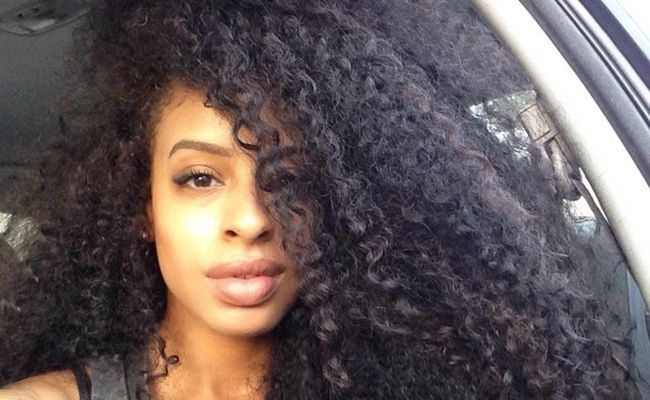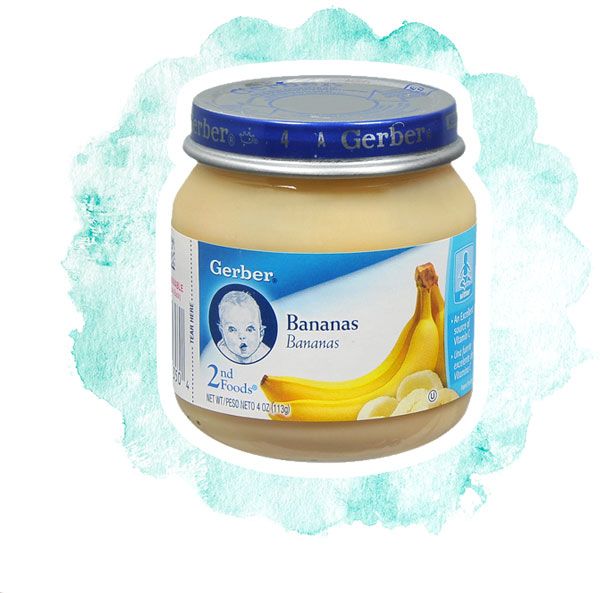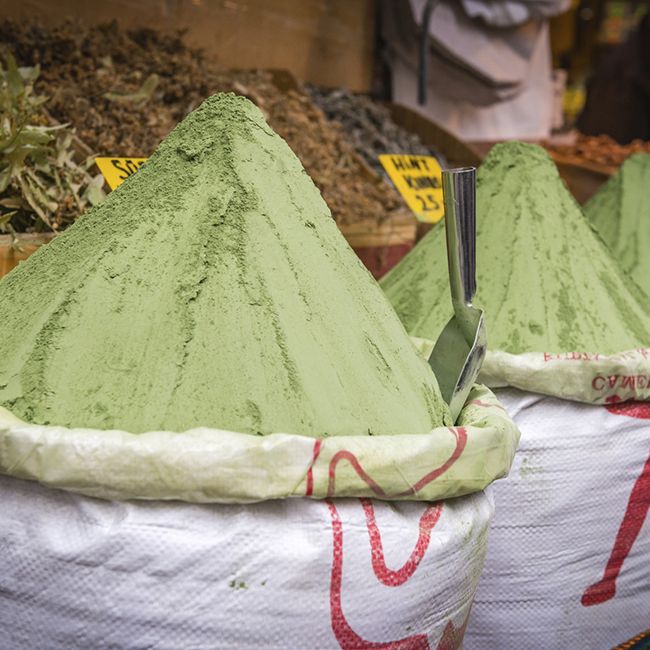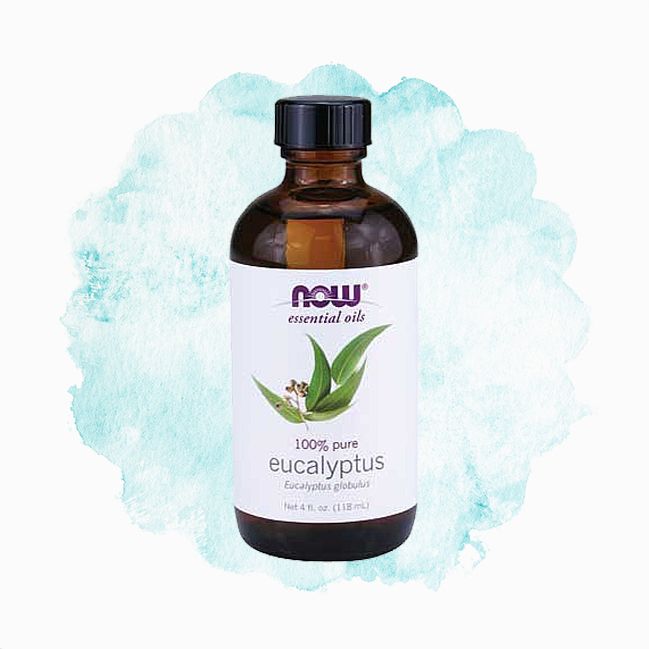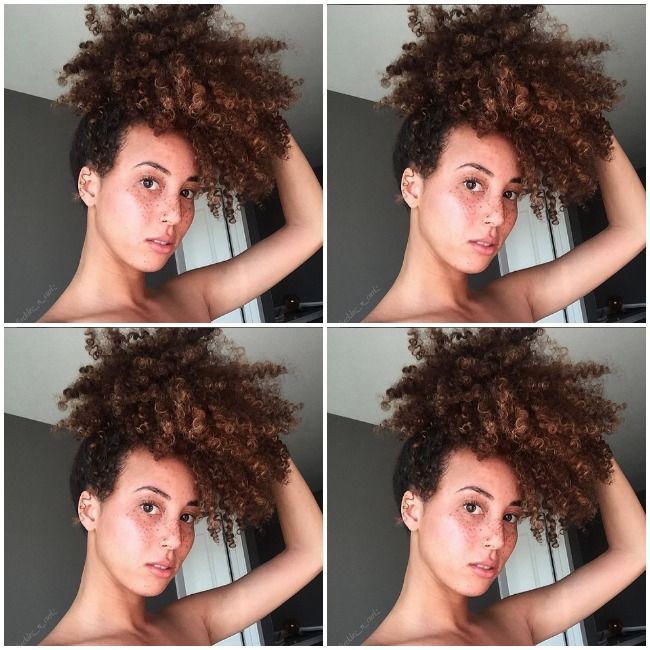Search Results: Emilia Obiekea

It can be frustrating and painful when it is time to start doing a child’s hair. The more textured the hair, the worse the process can be for combing and detangling.
Detangling is a challenging activity for parents and children – it can even be challenging for parents to deal with their own detangling sessions. Then, factor in having a sensitive scalp.
Image Source: @queensanitylv
Just the thought can cause anxiety. No one wants to go through this. Unfortunately, combing your child’s hair with as little tension as possible does not bring much relief. The solution to the problem starts before you start combing. A good detangler is a must!
Let’s make doing hair a more enjoyable experience for everyone. Try this DIY detangler and see how much your hair days with your little one improve.
DIY Detangler for Kids

Ingredients:
- Empty spray bottle
- 2 cups of distilled water
- 2 tablespoons of apple cider vinegar (ACV)
- 2 tablespoons of daily dew or a carrier oil of choice
- 1 tablespoon of aloe vera gel
- 4 tablespoons of marshmallow root
*This is optional. If you are concerned about using ACV on your child’s hair, feel free to leave it out. The recipe is still very effective without it. If ACV is excluded, add an additional tablespoon of aloe gel.
Why are these ingredients used?

Image Source: @iamlaliahrose
Distilled water is the purest form of water. You need not worry about bacteria, protozoa, and other contaminants in the water. Water is a great moisturizer.
Apple Cider Vinegar is acidic, which allows it to flatten the cuticle layer of the hair. The smoother the strands are, the easier it is to detangle, retain moisture, and reflect a healthy shine.
Carrier Oil is used to lubricate the hair and retain moisture from the leave-in.
Aloe Vera Gel makes the hair smooth and conditions the hair and scalp. It also reduces irritation and dandruff.
Marshmallow Root has antibacterial properties, is very soothing, and provides a lot of mucilage for tons of slip. This makes detangling a breeze.
Directions
- Boil the distilled water with the marshmallow root. Allow it to simmer for approx. 20 mins. Be sure to stir regularly. When you notice the water starting to draw or thicken it is ready.
- Strain and add in the ACV, daily dew, aloe gel and ACV. Stir well to fully incorporate then pour solution into a spray bottle.
How to Use It
Image Source: @f.t_fatima
- Shake well prior to each use.
- Hold a few inches from the hair and spray well. Spray more in areas that have tangles.
- Divide the dampened hair into workable sections.
- Comb the hair with a wide tooth comb from the ends up the length of the hair.
- Spray more at the roots if necessary.
- Be sure to store in the refrigerator when not in use. This should keep for a week or two. It does not contain any preservatives so be sure to discard if smell, color or anything changes before the two week period is up.
Additional note: Be sure to allow the child to read a book, play a game, or watch a show of your choice. This pleasant distraction will take their mind off the fact that you are doing their hair and make the experience much more enjoyable for you both.
I enjoy making and creating products when I have free time, especially using Ayurvedic herbs, which are wonderful for the hair and skin.
If you’re unfamiliar with the practice of Ayurveda, the University of Maryland Medical Center, describes it as “one of the oldest healing sciences that have a holistic approach to health. It is designed to help people live a long, healthy, and well-balanced life. It has been practiced in India for at least 5,000 years. It has recently become popular again in western cultures and is used to treat illnesses and maintain balance in the body, mind, and consciousness through proper eating, drinking, and lifestyle.”
I am sharing my own recipe for a home pre-poo/conditioning treatment that encourages healthy hair growth. We’ll start with a description of each of the ingredients that make up this moisturizing treatment.
The ingredients, and why they workCassia Seeds
Benefits: Cassia is a type of cinnamon, and it gives hair a beautiful sheen. The seeds are nothing like cassia powder, and they are mostly used to make a hot tea. A low key favorite of mine, many use the powder but don’t know about the seeds.
Amount: 3 tablespoons
Fenugreek Seeds (optional”>
Benefits: Prevents hair loss, promotes hair growth, helps strengthen hair shaft, light protein.
Note: Fenugreek has a very strong aroma. If you find it unpleasant, just leave it out. Those who do use it love it.
Prepare: Should be soaked overnight prior to using. Fenugreek is beneficial but not necessary for most.
Amount: 2 tablespoons, soaked in 1 cup of distilled water
Whole Amla (dried”>
Benefits: Amla stimulates hair growth, has wonderful conditioning properties, strengthens hair at the roots.
Amount: 3 or 4 pieces
It is my preference to use amla whole, but it is fine to use powder, also. Use what you have on hand, of course.Dried Rosemary
Benefits: Rosemary stimulates the scalp, encourages growth, provides relief for irritated scalp, proves a nice sheen to the hair.
An inexpensive, easily accessible herb.
If you are pregnant, it is not recommended that you use this herb. I’m not a doctor, of course, so please consult with your physician.
Amount: 2 tablespoons
Dried Hibiscus/Sorrel Flowers
Benefits: The flowers of hibiscus/sorrel produce a substance called mucilage, which has a softening and conditioning effect on the hair. These flowers also promotes healthy hair growth, prevent hair loss, and thicken hair.
Gives a nice rich red tone when in liquids. If your hair is light in color (ex: blonde”> substitute this with Chamomile or another floral of choice to avoid any staining. Hair in the browns, reds and black tones benefit by using this floral. It adds a rich tone and has a light amount of slip for detangling.
Amount: 4 or 5 flowers
Dried Mint
Benefits: Soothing scalp stimulant that is wonderful for dry scalp.
Use any kind you like; I’ve found that most people use peppermint. I use a mix of my favorite mints for my mint blend. I love the warm scent and the bit of tingle it gives my scalp.
Amount: 2 tablespoons
Honey
Benefits: A humectant that provides moisture and and shine when used. Honey can be expensive but the brand Heavenly Organic, for example, isn’t very costly. Really, you can use any type of honey that you have available.
Amount: 2 tablespoons
Goat’s Milk
Benefits: Goat’s milk soothes irritated scalp and softens the hair. Alternatively you could use coconut milk, soy milk, or almond milk.
Amount: 1/2 cup
Distilled Water
Benefits: Pure water without any chemicals or additives. The simplest and best-moisturizing component of any regimen.
If you don’t have distilled water, you can substitute coconut milk, soy milk, almond milk, etc.
Amount: 1 cup of water
Note: add the distilled water if fenugreek step was skipped.
Directions
- Add 1 cup of distilled water to the fenugreek seeds. Let it soak overnight.
- In the morning, warm the goat’s milk slightly. Then add the cassia seeds, hibiscus, amla, rosemary, and mint.
- Cover and turn off the heat source.
- Let the mixture steep until it is mildy warm.
- Strain the herbs from the infused milk.
- Add honey to the milk and stir until the honey has dissolved. Adding it at this time helps to maintain the integrity of the honey.
- Once the honey is fully incorporated add the fenugreek water or plain distilled water (if you skipped the fenugreek step”>. If you like to use the mashed fenugreek to infuse your water, you can use it that way as well.
This solution is very nice for the hair. It can be used as is, as a pre-poo, as a post-wash rinse (if using fenugreek follow up with something that smells nice to get rid of the scent”> or added to your favorite conditioners.
Apply
Once everything is fully incorporated, I pour it into a dye applicator bottle. If using this as a pre-poo conditioner, apply it to unwashed hair, rinse, then cleanse and deep condition with another product.
If using this as a conditioner, apply it after hair has been cleansed. I apply the mask to my hair for 30 minutes to an hour and then rinse.
Enjoy!
If you try this recipe, please comment below and let us know how it worked for you!
*Disclaimer: I am not a physician. I love DIY and to share with others. If you are allergic to any of these ingredients do not try it. If you are unsure if you should consult a physician, of course.
Read more:
The Clay Mask Recipe that Will Give You(r Hair”> Life
Best DIY Recipes for Naturally Curly Hair
This article was originally published in 2015 and has been updated to incorporate reader feedback.
Summer weather brings along humidity. In the natural hair community we know that humidity equates to frizzy hair. No bueno. Here are 5 of my incredibly easy DIY recipes to avoid frizz! Check them out below.
1. Carbonated Coconut Water Hair Rinse
Carbonated water is a simple solution to this common frizz issue because it has a low pH, which helps the cuticle layer of the hair lay flat. Coconut water is a [fantastic natural moisturizer](https://www.beautycon.com/article/can-you-put-coconut-water-in-your-hairg”> (although this recipe can be done with regular distilled water instead”>. This rinse should be done as the final step of your wash day rituals. If you would like softer, smoother feeling hair and increased shine, then this rinse is definitely for you.
What you’ll need:
- 1.5 cup coconut water
- 1.5 cup sparkling water
Directions
- Blend the coconut water and sparkling water together. (Equal amounts of each should create a balanced pH. Check to make sure the level is in the 4-5 range with pH strips if available. If it is too high, add some distilled water.”>
- After deep conditioning, simply pour the rinse over your hair. Repeat this step several times using an extra bowl to catch the runoff.
- Rinse the hair out with cool water or leave it as is and proceed to styling.
2. Apple Cider Vinegar Rinse
Apple cider vinegar (ACV”> is an absolute super star in the natural hair community. If your scalp is prone to build up, your hair is begging to be clarified. This rinse will not only care for your scalp, but smooth out your hair from root to tip.
What you’ll need:
- 3 cups distilled water
- 4-7 tablespoon unfiltered ACV
- 2-4 drops of your favorite essential oil (optional for fragrance”>
Directions
- Mix distilled water and ACV together. If the vinegar’s smell is too strong for you, feel free to add some of your favorite essential oil to counteract it.
- Pour the rinse over freshly washed hair. Leave in for a few minutes then rinse thoroughly. Use this rinse only on an as-needed basis.
3. Gelatin (Protein”> Solution
Frizz can be a sign that your hair’s protein and moisture levels are out of balance. This gelatin rinse is a very effective treatment that re-aligns this delicate balance. Hair is left feeling softer with frizz completely banished.
What you’ll need:
- 1 ounce regular gelatin
- 1/3 cup hot distilled water
- 1 tablespoon honey
- 2 tablespoon your favorite oils, such as jojoba, argan, Vitamin E or sweet almond
- 1 spray bottle
Directions
- Mix gelatin with hot distilled water.
- Add in honey and Daily Dew oil.
- Pour solution into a spray bottle, shake well and spray all over hair until it is fully saturated.
- Allow the mixture to sit on hair for 2-5 minutes, then rinse well and use a moisturizing deep conditioner. Rinse this out with cool water.
- Lastly, moisturize and seal your hair using the LCO method.
4. Beer Rinse
Go on over to the grocery store and grab yourself a six pack. This simple rinse is packed full of Vitamin B and other nutrients, which will help replenish the moisture in your hair. Keep in mind that darker beers have higher concentrations of nutrients, but lighter beers should be used on lighter hair. Let your hair drink it up!
What you’ll need:
- 1 cup distilled water
- 1 cup room temperature flat beer
- 2 drops peppermint essential oil (optional for fragrance”>
Directions
- Add water, beer and peppermint oil to a spray bottle or bowl and mix it well.
- Spray the rinse directly on hair or pour over it and allow it to sit for 2 minutes.
- Rinse with lukewarm water and rinse again with cool water.
5. Banana Hair Mask
Don’t freak out quite yet. We’ve all heard the horror stories of people having bananas forever stuck in their hair from DIY disasters. However, we’ve found a way to combat that: baby food. Baby food is pureed and sifted to perfection. You will have absolutely no problem rinsing this mask out and your hair will feel like silk!
What you’ll need:
- 1 jar banana baby food
- 2 tablespoon your favorite hair butter
- 1 tablespoon raw honey
Directions
- Mix ingredients together and apply to damp hair. It should feel like it’s melting and being absorbed by your hair.
- Cover hair and let it sit for 30 minutes without heat. At the end of 30 minutes, your fingers should be able to comb through your hair very easily.
- Rinse well and bask in the wonder of your frizz-free locks.
Would you prefer to skip the DIY and buy a ready-made frizz product instead? Here are 10 anti-frizz products that actually do what they say.
What is your favorite at-home remedy to beat frizz? Let us know below!
This article was originally published in 2011 and has been updated for grammar and clarity.
When starting your journey to natural hair it can be tough. Some of the people closest to you may be negative about the new you. Don’t let the haters get you down. This is not only a transitioning process but an opportunity for personal growth and a chance to inadvertently influence those around you. When people are accustomed to seeing you a specific way for many years, it can be hard for them to become acclimated to your new appearance. You will have some ups and downs. Experience hits and misses. Quite possibly feel like changing your mind and going for what you know: back to the relaxers and other chemical processes. You are not alone. These are all normal experiences. Caring for your hair should not feel like a part-time job. Here are some tips to make your move to natural hair as smooth as possible.
1. Don’t buy every product
Don’t go broke buying the latest and most hyped products that you see. Get the essentials. Your hair care will be changing a few times due to having to re-learn how to care for your hair. I did a long-term transition (3+ years”> from my relaxed hair to my natural hair. I went natural due to my life long scalp issues with dandruff and psoriasis.
Here are the 8 essential items you will need:
- Sulfate-free shampoo: use biweekly.
- Cleansing conditioner aka co-wash: use weekly between shampooing.
- Rinse-out conditioner: great to use when you co-wash.
- Light to mid-level protein treatment: use once a month or as needed.
- Moisturizing deep conditioner (DC”>: Do this weekly. Always follow up protein treatments with a moisturizing DC.
- Leave-in conditioner
- Oils & butters. Depending on the density of your hair you may prefer lightweight or heavy oils and butters.
- Styling product such as custard or gel.
2. Do detangle with patience
Be patient when combing and detangling your hair. Without patience, wash day can be a nightmare! The key is to work on your hair in sections. Apply an inexpensive rinse-out conditioner and detangle with a wide tooth comb or shower comb. The conditioner should have tons of slip. It makes releasing the knots in the hair much easier, reducing unnecessary breakage.
3. Don’t damage the line of demarcation
Always moisturize your hair and be careful with the line of demarcation. This is the area where your natural and processed hair meets on the strand. It is very fragile and prone to damage. It needs the most care.
4. Do treat your hair to moisture & protein
Deep condition your hair every wash day. Never miss it. This provides your hair with much needed moisture and makes it more pliable. It is a real treat for your hair. Do a light to midlevel protein treatment as needed. Previously relaxed or damaged hair needs strengthening.5. Don’t use a texturizer
Never use chemicals such as texturizers, texture softening systems, hair dyes, etc. They can cause havoc and derail your progress.
6. Do find your go-to style
When styling, work with your hair and never against it. Blend those textures. While transitioning, I found that my relaxed hair did not look very good when I did twist outs. Braid outs where always on point though. I applied leave-in conditioner and oil, detangle and braid it, then put a roller on the ends and called it a night. It’s super easy. Not into blending? Get braids. Be sure to keep your hair moisturized while it is braided. Using a liquid leave-in spray is ideal to moisturize your scalp and hair. Hair needs water to thrive. I like to use water and aloe vera based leave-ins.
Remember you are doing this for you. Enjoy the journey.
Children learn by watching and imitating. They will wear our jewelry and clothes out of curiosity. We should start early to teach our natural haired kids how to care for their hair. Remember to always compliment your child’s hair. Say nice and motivating things while styling their hair. Getting their hair done or doing it themselves should never be a negative experience. It is not a chore. It is a fun exploratory time.
Here are a few tips on how to teach your child to love and take care of their hair.
1. Show them how to wear a bonnet
This can start from as early as 4 or 5 years old. Teaching your child to wear satin bonnets and shower caps are excellent ways to protect their hair from damage.
2. Start simple
From 1st grade it is fun to begin teaching them about moisturizing and sealing. Be sure to keep it super simple for your little ones. It can be stressful when made complicated. Initially, start by letting them do a simple task like putting moisturizer on their own hair:
- Divide your child’s hair into small sections.
- Put some leave in in their hands, let them rub their hands together and apply it to their hair. It doesn’t need to be perfect or precise. They are just getting the mechanics of it for now.
- Comb and style that section of hair. By doing this it gives them something to look forward to doing as you complete each section. They will be eager to put the moisturizer on the next section of hair. Let them hold your hair tools and pass them to you as your little helper.
Note: Be sure not to make it time consuming. Children dislike tedious tasks.
3. Introduce them to washing, slowly
When you teach a child to wash and detangle their hair will vary depending on the ages of your children. If they are very young, you will want to keep the water out of their face when washing and rinsing. There are many visor style hats that are made to prevent water from running on to your child’s face, which will make the whole process more bearable for them.
Teach older children how to wash and detangle their hair. Talk about what you are doing as you wash the hair and why. Do the same for detangling. Explain what the products and tools are that you are using to get it done. Eventually let your child wash and detangle their hair one section at a time. Sometime in the near future, they will be caring for their hair almost entirely on their own. It will be such a great accomplishment!Of course this is done to your preference. Demonstrate on your hair and on theirs how to do each step of this simple routine. The age ranges are just suggestions. This will vary for each child. If he/ she is not interested in caring for their hair at this moment, be creative. Try to make it more fun. If that doesn’t work now that is fine, just give it some time and try again at a later date.
Cassia Obovata and henna are similar but yield very different results when used on the hair. The benefits they both provide for hair are wonderful, but there are also disadvantages associated with each. If you are trying to choose which is best for your hair, the information below will help you decide.
Henna
Henna is a blooming plant with leaves containing red resin pigment. The color is released when the leaves are crushed and liquid is added to it. Many have used it for temporary body art and permanent hair color.
Pros
Henna is 100% natural and very inexpensive. It deters scalp issues such as dandruff, detoxifies the follicles, makes hair stronger, and leaves the hair feeling silky. Henna is able to penetrate the hair and adhere to the strands. The dye deposit fills in the gaps, which is how it is able to strengthen the hair. The color is long lasting and does not fade. The lighter colored your hair is, naturally, the more its reddish-orange color will show. On dark hair the color deposited is more visible in sunlight. If you have henna that is another color such as black or dark brown, then it has had dye added to it. The effects of henna can be noticed for approximately 4-5 weeks.
Cons
When mixing the henna for application it takes hours for the dye to release properly. It is good to mix it and let it sit for a few hours before application. When you are mixing, you will also find that it stains everything! Be sure to wear gloves and cover the surfaces of your workspace and bathroom prior to application.
It does not aid in moisture retention and it takes a while to soften. Some curlies find it has a very harsh or drying effect when used. For looser curl and wave patterns it can cause the hair to straighten with each application, which I experienced myself and is the reason I stopped using henna.
It is strongly advised against using henna on hair that has commercial grade hair dyes on it. It can also be problematic if you would like to color your hair after you have been using henna on it. It does not work as a traditional dye with a developer, and it only deposits color.The red shades of the henna are hard to regulate due to it being a plant-based natural dye. Climate and location of where the henna was harvested can greatly impact the type of color deposited onto the hair. It will never lighten the color of your natural hair, and it can also darken your hair with continued use over time.
It is important to be very careful with henna that has additives as people have experienced negative effects from these additives.
While this may seem heavy on the cons, it’s important to note that whether or not you use henna is truly an individual preference, it may work well for some hair situations while it doesn’t work for others. For example blogger CurlyNikki has successfully been using henna for years to create a more voluminous look for her fine hair. On the other hand NaturallyCurly Editor Devri did not enjoy her henna experience because she likes to experiment and express herself through different hair colors, and after using henna she felt limited in her options. NaturallyCurly Editor Cristina has wavy, Type 2c hair and she used henna on her previously bleached blonde hair, so her results ended with dry, coarse hair and loss of curl definition.
Cassia Obovata
This is commonly known as neutral henna, but it isn’t henna at all. The leaves contain yellow resin pigment and it is well known for its conditioning and restorative properties.
Pros
Cassia Obovata is 100% natural and very inexpensive. It conditions the hair and makes it very soft. It takes less time to mix, because you don’t have to wait for the dye to release. It can be applied and rinsed out after 30-60 minutes. It does not stain like henna, so gloves are optional during application. Cassia Obovata also provides most of the same wonderful characteristics as henna without depositing noticeable hair color on dark hair.
This is excellent for those that do not want red hair. It does not loosen the curl pattern in the same manner that henna can. I never had an issue with Cassia straightening my hair. If you dislike protein treatments, it is a good choice for strengthening your hair. It makes the hair feel thicker, smoother, and provides a great sheen.
Cons
The effects of Cassia Obovata are not permanent like they are with henna. It will only last for approximately 2-3 weeks. You will have to continually maintain it in your hair care regimen in order to enjoy the benefits long term. It is not as strengthening as henna and it will deposit a yellowish tent on the hair if your strands are gray.
Which one should you use?- If you are hoping to naturally color your hair a reddish color (and have not previously used hair dye”> then henna is going to be the choice for you. Just be aware of the potential for dryness or loss of curl definition, and be sure to avoid stains.
- If you want the benefits of a natural conditioner, without depositing color onto your hair, then go with Cassia Obovata.
Have you used henna or cassia? What were your results?
Many of us spend a lot of time and money caring for our hair. We pre-poo, deep condition, use low-poo cleansers, no-poo cleansers, avoid -cones, moisturize and seal, yet do not have the amount of growth that we expect to see after a year. Hair health starts at the scalp. When the scalp is in top condition it provides a wonderful environment for optimal hair growth.
Check the condition of your scalp. An excessively oily or dry scalp can be a sign of
- a medical condition
- side effects of medication
- a vitamin deficiency
- dehydration
Be sure that you are consuming enough water daily and well balanced meals. Foods such as veggies, fish, fruit, grains, beans, and nuts are great sources for vitamins (such as A, B and C”>, iron, and healthy fatty acids. If you think you may have an imbalance it is always good to consult with a physician and nutritionist. They can determine your deficiencies and create meal plan tailored to your body’s needs. Daily multivitamins are a great start.
Here are some ways to get your scalp healthy and keep it that way.
Avoid the roots
Avoid applying products too closely to your roots. This allows the sebum to distribute down the length of the hair and can buy you a few days before needing to wash your hair again. Also is a good way to prevent clogging your pores.
Massage your scalp
Rub the scalp with the pads of your fingers for a few minutes daily. This increases blood circulation and stimulates the follicles to encourage hair growth. If your scalp does not produce enough oil, sebum, be sure to oil your scalp as needed. Use an oil of your choice and monitor your scalp’s improvement.
Exfoliate your scalp
If you notice flaking and dandruff scalp, exfoliation is very nice for removing dead skin. It leaves your scalp feeling very fresh and clean! Do not do this treatment regularly. It should only be done as needed on a biweekly basis.
DIY Scalp Scrub
- 2 tablespoons of conditioner
- 3-4 tablespoons of brown sugar
- 3 drops of tea tree, peppermint or eucalyptus essential oil (the Now Foods Eucalyptus Oil is pictured above”>
Mix together the ingredients in a bowl. Dampen your hair. Part the hair and apply mixture directly to the scalp. Gently massage the scalp for a minute or so with the pads of your fingers. Rinse out well with warm water and proceed with your wash day routine.
Scalp cleanser
An oily scalp can be due to overproduction of sebum (oil made by the scalp”>. Usually this causes need to shampoo several times a week. This can make your hair and scalp very dry. Try this diluting a cleanser with water in a dye applicator bottle. Apply it directly to the scalp. Massage and rinse well. Follow up with a rinse out conditioner. Using a dye applicator bottle allows you to apply the cleanser only at the scalp so that you can focus product there, rather than cleansing all of the hair when it doesn’t need to be cleansed.
Many naturals have multi-textured hair, which can be a real struggle. I am in this category.
My biggest issues with my multi-textured hair were detangling and styling–mastering patience, technique, product selection, and application were the key elements for keeping my hair healthy. These things also helped to avoid frustration.
How to identify if you have multiple textures
Ask yourself these questions.- Do different sections of your hair require different products?
- Does the level of ease for combing and detangling fluctuate throughout your hair?
- Do you have visibly varying curl patterns?
If this sounds familiar, you are a multi-textured natural! Welcome to the club.
Detangling hair that has 2 or more curl patterns can cause a lot of breakage. If so, give these tips a try and see how having multi-textured hair can actually be hassle-free.
1. Divide & Conquer. Dampen your hair and work in sections. Be sure to divide the hair in sections according to the texture. Never comb your hair through without separating it into sections first.
2. Keep it separated. When pre-pooing, washing, conditioning, moisturizing and styling always do this in sections. As you complete working with a section always braid or twist it to avoid unnecessary tangling.
3. Pre-pooing is a must. Multi-textured hair is prone to tangling and tearing. Pre-pooing with an oil or conditioner provides your hair with much needed lubrication. Be sure to remove shed hairs while applying your pre-poo. I find that pre-pooing with oils and butters work much better than conditioner for me. I spray my hair with water then apply Budding Butter Treat to it overnight and cleanse it in the morning. This makes wash day a breeze. You will notice that your hair will love oils and butters as part of your regimen too.
4. Learn how to select and apply products. Product application can be tricky. After cleansing the hair, follow up with a leave in that will not weigh down your hair. Lightweight moisturizing leave in conditioners and penetrating oils are wonderful for keeping all of the hair hydrated. Areas that are denser or have more highly textured hair usually require thicker product application (can be a bit more heavy-handed”>. Layering products using the LCO or LOC method will result in more predictable results.
5. Styling can vary. For wash-and-gos, banding, twist outs, braid outs, flexi-rod sets, roller-sets and bantu knot-outs are tried and true go-to styling options for blending multiple textures. Try out variations of these styles.
6. Nighttime routine seals the deal. Moisturize and protect your hair nightly. If you do not need any moisture just been sure to always wear a bonnet, scarf or use a pillowcase (these items should be satin or silk”>. It is a great way to protect your hair, preserve a style and reduce the amount of product you may need to use to refresh the style in the morning.

